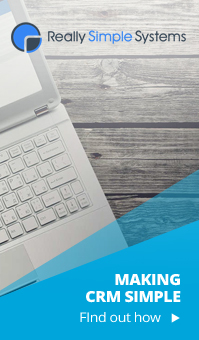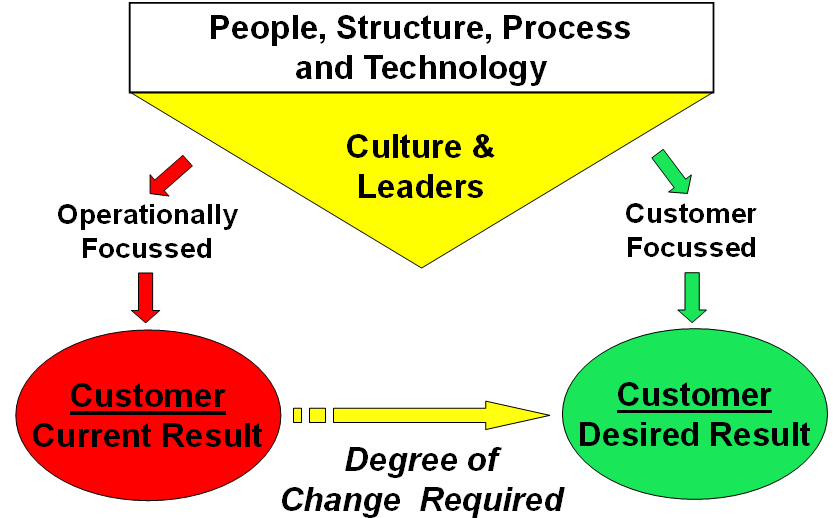
People, Change and CRM
So you have decided to adopt a
Customer Relationship Management system (CRM). The technology has been
evaluated and selected and the infrastructure has been designed. Expectations
are raised and the sales and marketing people dream about the opportunities the
new technology will create. Project plans are prepared and you are ready for
implementation. But what about the people involved? Where do they fit in? Will
the culture of your organisation encourage or inhibit the changes required?
If the capabilities of a CRM system are to be realised, the people side of any implementation must be addressed. In this article we explore some of the cultural, people and change factors that need to be considered.
CRM and Change
Typically, the adoption of a CRM system reflects a desire to increase the effectiveness of a business and to focus on customers. A CRM system provides many opportunities to create radically new ways of working and thinking. Inherent in this process is change, whether it be small or large, extensive or local, personal or systemic. These changes will impact people (with new roles, priorities, structure and processes), leaders (managing a more complex and dynamic environment) and the organisational culture. To consider the degree of change required, ask yourself:
1. What type of organisation do we need to become to fully utilise CRM?
2. To become truly customer focused, what do we need to change?
3. Do we have a robust process for initiating and sustaining change?
The challenges in adopting a CRM approach include:
- combining the people, structures, processes and technology required to produce the desired results for customers
- moving from a product and operational focus to a customer focus
- creating a culture that encourages the pro-active embracing of change
- managing the change process
Culture and Customer Focus
In thinking about culture, it is worth reflecting on some of the questions commonly asked by leaders.
Isn’t culture a “fuzzy area” that leaders have little influence on?
No. Culture is manifested in what people focus on, what is expected of them, what they are rewarded and penalised for, and the behaviours and attitudes the leaders model and the organisational systems reinforce. A primary task of any leader is, therefore, the management of that culture.
Does culture have much impact on our results?
Yes. Kotter and Heskett’s (1992) eleven year analysis produced some compelling results about how the “culture” of a range of organisations influenced their economic performance. They concluded that organisations with “adaptive cultures” outperformed “non-adaptive cultures” by a factor of four in terms of revenue, twelve in terms of stock price and 700+ in terms of net incomes. Many businesses may think “we are doing well now with our current culture”. It is more useful to ask “how can we improve our culture to improve our results?”
In adopting a CRM system, an organisation typically wants to be able to say that “we are customer focused and therefore flexible and quick on our feet”. If your clients describe you in terms such as “know what we do, adaptable, high quality, take time to listen, responsible”, you may already have a culture that will embrace the changes required to fully utilise CRM.
If however, your clients use terms such as “pushy, slow decision making, don’t know us, red tape and detail” to describe your organisation, or they say that “your products work, but your organisation doesn’t”, you can assume that culturally and practically you will have a few challenges ahead in adopting CRM. Once an organisation defines its current and desired cultures, it can then design suitable change initiatives to close the “gap”.
People and Change
Change is about people, but many software implementation methodologies focus almost exclusively on the task aspect of implementation. The most successful way to implement new systems and business processes is to address the people and task aspects simultaneously.
In tackling the people side of change, we need to recognise that, regardless of how “rational” people may appear, change is an emotional event. We know that people’s emotions influence their behaviour and ability to embrace the change. We also know that change is perceived as significant when it impacts people personally. Just try reorganising your office layout to see the level of emotionally based behaviour demonstrated!
When change is in the air, people will be asking a number of questions: “why is this happening?”, “what will happen?”, “what’s in it for me?”, “how will it impact me?” and “what do I need to do?” Interestingly, if the answers to these questions are not provided, people make them up. Providing accurate meaning around the CRM system and the changes it creates is therefore vital.
Harnessing the opportunities a CRM system creates involves increasing the ability of people to thrive in an environment of constant, rapid and unpredictable change. People’s sense of control s enhanced through involvement in the change process. Their expectations are more realistic when common meaning is created. The ability of people to participate and show initiative is improved when they receive support and education. The ability of the organisation to function is enhanced when change is created at a rate that can be absorbed by its people.
The people aspects of change can seem to be “too hard” or “too intangible” and may therefore be avoided by leaders. Yet addressing the people side of change is just another set of skills that can be learnt and, once learnt, can facilitate the creation of adaptive cultures.
The Impact of Leadership
An organisation’s leaders are a primary driver and model of the culture. What leaders do and say impacts the performance of others. Leaders are therefore always creating and reinforcing a culture. Given this, it is helpful if leaders consciously and pro-actively create the culture required for success.
In driving through the changes necessary to embrace a CRM, leaders have a number of roles in:
1. emphasising the importance of customers, people, stakeholders and change
2. enrolling people, creating meaning, and setting direction and staff expectations
3. harnessing the resources required
4. removing obstacles
5. coaching and supporting people
6. maintaining a constant focus on change
7. maintaining the momentum of change over time.
In short, leaders create an environment in which people can operate at their highest possible level.
Use a Process
There is great value in using a change process to guide the adoption of a CRM system. This may seem obvious, but it is amazing how many organisations miss this point entirely, and later find themselves spending time sorting out issues that a good process would have addressed up front.
An effective change process anticipates the typical challenges to be faced, provides a common language and framework, and aids in overcoming unexpected obstacles. The first step in the process is to realise that for change to be embraced, there needs to be clearly articulated and compelling reasons for it to take place. Once people agree that change is essential, they are more willing to listen to the “solutions”. In other words, why would busy people put themselves through the discomfort of change if they are not convinced of its merits?
A truly customer focused organisation is built upon a culture that allows people to grasp the opportunities and handle the challenges a CRM system produces. As the customers change, the organisation responds accordingly. The organisation recognises that it has to change and that real opportunities come to those who embrace change as the norm. Its ability to pro-actively change and handle complexity is used as a competitive tool, and is the adoption of CRM. Its customer report “your products work and so does your organisation”.
Date posted: 2014-12-16 | posted by: miked
Tweet




